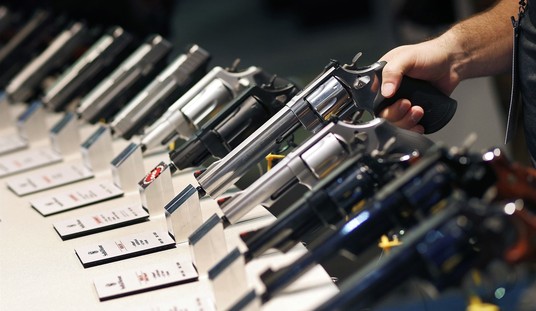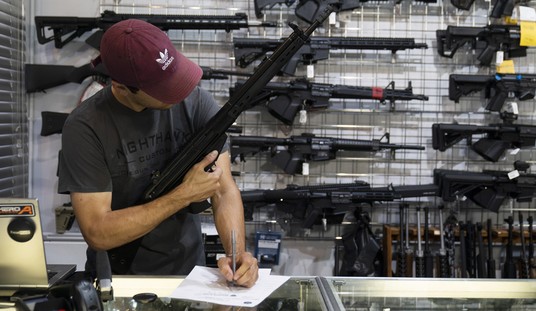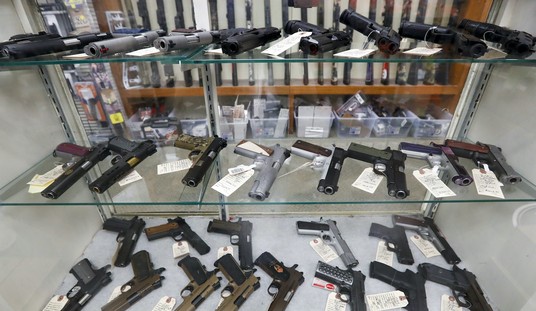
The probationary officer who shot and killed a college football player who was advancing upon him during a car dealership burglary has been fired in Arlington, Texas.
19-year-old Christian Taylor, a football player at Angelo State University, attacked vehicles in a car dealership parking lot before crashing one through the showroom window of Classic Buick GMC. A security company dispatcher made the 911 call that led police to the scene.
Once 49-year-old rookie officer Brad Miller and his supervisor arrived, the following allegedly occurred:
Called to the scene of a suspected burglary early Friday morning, Arlington officer Brad Miller, 49, pursued 19-year-old Christian Taylor through the broken glass doors of a car dealership showroom without telling his supervising officer, Johnson said.
Miller ordered Taylor, 19, to get to the ground. Instead, Taylor cursed at the officer and advanced toward him, Johnson said.
When Taylor was about 10 feet away, Miller fired.
Taylor continued moving, so Miller’s training officer, Cpl. Dale Wiggins, shot Taylor with a Taser.
Miller then fired three more times. At least two bullets struck Taylor, killing him.
Johnson said the interaction between Miller and Taylor lasted only seconds.
Oh, it would be wonderful to have details here… and body cameras.
Christian Taylor was clearly acting in a criminal manner, and was being non-compliant and aggressive, a fact that no one seems to be disputing. The questions revolve around:
- whether Officer Miller was justified in firing upon an unarmed but combative advancing suspect
- whether Cpl. Wiggins could have/should have deployed his taser before Miller fired
- whether Wiggins taser shot made solid contact with Taylor, and if so, how effective it was in altering Taylor’s behavior
- whether each of Miller’s three shots fired after Wiggins used his taser could be justified, both legally, and within department use-of-force guidelines
There’s a lot going on here, both legally and philosophically.
If you take the view that officers may not ever use lethal force against unarmed people, for any reason, well, you can stop right here. You lack the training, background, experience, and judgement to have a rational conversation, and are welcome to leave. The fact of the matter is that firearms are a rational response and sometimes the only viable response to an unarmed but still potentially deadly assailant.
It is generally agreed upon in most departments (and certainly under the law) that if a suspect advancing upon the officer or officers poses a credible threat, then officers may used deadly force. Christian Taylor, a 19-year-old college football player, would certainly seem to be in the sort of physical shape for a middle-aged officer to believe that Taylor posed a clear threat of overwhelming the officer in a physical confrontation, which could lead to the officer having his gun taken. Based upon this general criteria, Miller’s first shot would seem to be justified.
It seems that Miller got in trouble by pursuing Taylor into the dealership building without communicating his movement to Cpl. Wiggins, his supervising officer. As a result, the officers were not in a buddy team where Wiggins could deploy his taser with Miller providing a lethal force alternative. It appears Miller’s breaching of policy here is what led to his being fired. Wiggins simply didn’t have a chance to deploy the taser before Miller shot Taylor.
Cpl. Wiggins is going to be the key witness in determining whether or not Miller is charged with a crime. His perspective on the effectiveness of his taser use on Christian Taylor is the difference between a policy-violating but legal self-defense use of a firearm by an officer, or a criminal homicide.
If Cpl. Wiggins says that his taser was ineffective—they often are to a shocking degree (pardon the pun)—and Taylor continued advancing upon Miller, then one or more of the subsequent three shots may be legally justified. Indeed, all three shots may end up being legally justified.
But if Taylor was incapacitated to any substantial degree, and his forward movement towards Miller was retarded or had stopped entirely, then Miller may have committed a criminal homicide.
Unfortunately, we don’t know the key details of the testimony of Cpl. Wiggins, Officer Miller, or other officers who may have witnessed the brief but fatal conflict, and we don’t know what impact forensic evidence may make.
The Arlington Municipal Patrolman’s Association is not happy that Officer Miller was fired so quickly after the incident, while still expressing sympathy for the Taylor family and their loss of a son. Taylor’s father seems to understand that both his son and Officer Miller may have made bad decisions that night that led to Christian Taylor’s death.
As gun owners who are not police officers, what can we learn from this incident?
- Keep your distance if at all possible. Never advance upon a threat unless innocent lives are on the line (they weren’t here).
- Do not fire unless you must, but if you must fire, make your shots count.
- Make sure that you account for and can legally justify each and every shot.
You are legally accountable for every single shot that leaves the muzzle of your firearm, and it is quite possible from a legal perspective for your first shot or shots to be easily legally defensible, while other shots during the same incident may be criminal if you fire shots that do not meet the threshold of the “reasonable man” standard of self-defense.
Get trained by a professional, folks, and follow that training. Learn the applicable self-defense laws for your state.
Don’t set yourself up for failure, as now former officer Miller apparently did.








Join the conversation as a VIP Member